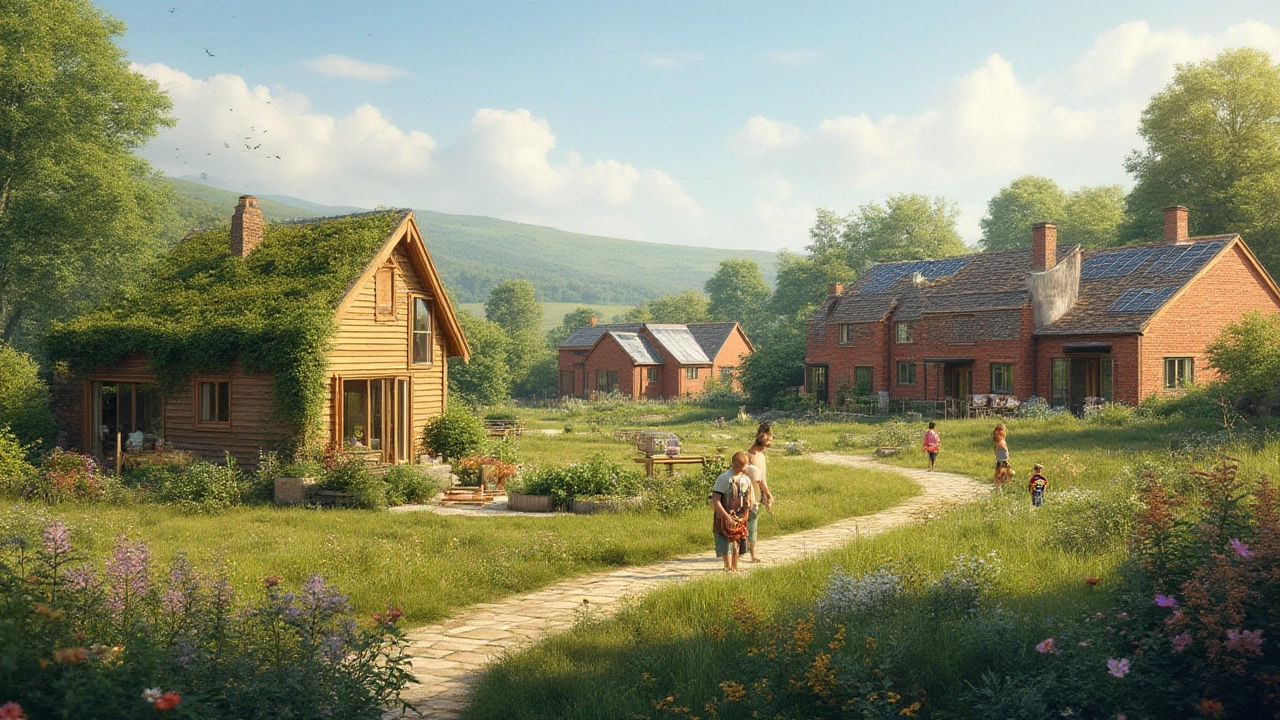
Eco-Friendly Housing: What You Need to Know
Thinking about a greener home? You probably wonder if it will break the bank, what materials count as eco, and whether the savings are worth the effort. This guide cuts through the hype and gives you straight‑forward answers you can use right away.
First off, an eco-friendly house isn’t just a fancy label. It means the building uses less energy, wastes less water, and relies on materials that don’t scar the environment. You can find these homes everywhere—from tiny modular cabins to full‑size countryside cottages.
True Costs and Savings
Most people assume green homes are expensive, and there’s some truth to that. The upfront price can be higher because of better insulation, solar panels, or certified timber. However, the hidden savings often outweigh the initial spend.
Energy bills drop dramatically when you add proper insulation and efficient windows. A typical family can save 30‑40% on heating and cooling each year. Water‑saving fixtures cut usage by up to 20%, which adds up over time.
When you calculate the payback period—how long before the savings match the extra cost—you’ll see many projects break even in 5‑8 years. That’s especially true if you qualify for government rebates on solar or low‑carbon construction.
Don’t forget hidden costs. Some eco features need regular maintenance, like roof‑mounted solar arrays that may need cleaning or battery replacement after a decade. Factor these into your budget so there are no surprise expenses down the line.
Choosing Green Materials
Not every “green” product is truly eco‑friendly. Avoid materials that boast a green badge but still release toxins or demand massive energy to produce. For example, standard concrete has a huge carbon footprint, while alternatives like hempcrete or fly‑ash concrete release far less CO₂.
Look for certified timber from sustainably managed forests. The label might say FSC or PEFC—both mean the wood came from responsibly harvested sources. Reclaimed wood is another great option; it repurposes existing material and adds character to your home.
Insulation is another spot where choices matter. Fiberglass is cheap but not the best for the environment. Sheep’s wool, cellulose (made from recycled paper), or even straw bale walls can provide excellent R‑values while staying low‑impact.
When you shop for paints, finishes, or flooring, pick low‑VOC (volatile organic compounds) products. They improve indoor air quality and reduce health risks, especially for families with kids or allergies.
Finally, think about the whole life cycle. A material that’s cheap now but needs replacement in five years may cost more overall than a pricier, longer‑lasting option.
Putting these ideas together doesn’t have to be overwhelming. Start with one upgrade—like swapping old windows for double‑glazed units—and watch the energy bill shrink. Then add solar panels, upgrade insulation, and choose greener finishes as budget allows.
Eco-friendly housing is a journey, not a one‑time decision. Every step you take reduces your carbon footprint and can save you money in the long run. Use this guide as a checklist, and you’ll be on your way to a greener, more affordable home that feels just right for you.
